
http://www.iaeme.com/IJM/index.asp 199 editor@iaeme.com
International Journal of Management (IJM)
Volume 8, Issue 3, May–June 2017, pp.199–203, Article ID: IJM_08_03_022
Available online at
http://www.iaeme.com/ijm/issues.asp?JType=IJM&VType=8&IType=3
Journal Impact Factor (2016): 8.1920 (Calculated by GISI) www.jifactor.com
ISSN Print: 0976-6502 and ISSN Online: 0976-6510
© IAEME Publication
AN ANALYSIS ON SPENDING AND SAVING
PATTERN OF COLLEGE STUDENTS IN IDUKKI
DISTRICT
Mebin John Mathews
Santhigiri Institute of Management, Kerala, India
ABSTRACT
Almost 50 graduates and post-graduates completed a questionnaire on their
sources of personal income (pocket money/allowance, part-time job, gifts), as well as
how much they had saved, where it was stored, and for what purpose it was intended.
Particular attention was paid to bank accounts. The participants also responded to
various attitude statements about money and the economic situation in general.
Females received more pocket money than males. Over 80% of the children claimed
their parents would not give them extra money if they had spent it all.
Key words: Savings, Spending, Pocket money, Parents.
Cite this Article: Mebin John Mathews, An Analysis on Spending and Saving Pattern
of College Students in Idukki District. International Journal of Management, 8 (3),
2017, pp. 199–203.
http://www.iaeme.com/IJM/issues.asp?JType=IJM&VType=8&IType=3
1. INTRODUCTION
People who saved and had savings, while simultaneously having debts, felt more optimistic
and in control of their lives than those who had debts but no savings (Furnham, 1997).
Livingstone and Lunt (1993) examined in particular the relationship between saving and
borrowing. Habitual or regular savers were found to have different psychological motivations
from borrowers, seeing debt either as a failure or as a normal part of everyday life.
Sonuga-Barke and Webley (1993) argue that children's behaviour and understanding of
saving like all economic behaviour is constructed within the social group, and are fulfilled by
particular individuals, aided by institutional and other social factors and facilities.
Sonuga-Barke and Webley (1993) found children recognise that saving is an effective
form of money management. Money will give freedom and choices.
Sonuga-Barke and Webley (1993) argue that saving is defined in terms of the quality of a
set of actions (going to the counter and depositing money), made in relation to one or other
institutions (bank or building society).
Bodnar (1997) notes the existence of banks in America aimed specifically at children.

Mebin John Mathews
http://www.iaeme.com/IJM/index.asp 200 editor@iaeme.com
Money is any clearly identifiable object of worth that is generally accepted as payments
for goods and services. The spending and savings of youth in India has changed severely in
the past few years as a result of westernization and higher spending power. With cultural shift
to westernization in India and beginning of mall culture, the spending and savings behaviour
of the students have distorted over the years. Based on the recent studies showed that Indians
expenditure and purchasing power increasing day by day due to global scenario. Especially in
Young people’s mind. They have shown keen interest towards fashion updates. Youth is
spending more money on entertainment and Lifestyle and has become more brand conscious.
With the increase in standard of living of adults, the young have also been empowered with
more money and have got more spending power.
2. STATEMENT OF THE PROBLEM
Youth is shifting towards enthusiasm, energy, education, enjoyment. They should not take
enjoyment as first and rest of the things as last. Now a day’s most of the students consider
vital things as first and enjoyment as last due to awareness, Technology up-date, Education
and Socio-Cultural groups. Youth can do the positive and negative with incredible energy. In
this stage, youth may go with their own thoughts; it may be a pessimistic or optimistic for
their self or others. If it is optimistic it will be good for all. If it is pessimistic their self or
others may suffer. So we should find out that whether the youth are travelling on right path or
not, especially on their savings and spending habit.
Now a day’s, part-time job opportunities for college students to earn while learn is one of
the best source to earn income. Most of the students are getting the money from parents to
meet the day to day expenses in college life. So in this context it is very essential to study
about spending behaviour, how much, when and where they are spending, factors influencing,
Mode of spending etc.
3. OBJECTIVES OF THE STUDY
• Aims at analyzing the Pattern of College students towards spending in Idukki district.
• To study about the cultural, social, economical, educational and psychological factors that
influences students towards savings and spending.
• To identify the factors that determines the savings and pending behaviour of students.
• To evaluate the experience of students in spending.
• To evaluate the student satisfaction in spending.
4. RESEARCH METHODOLOGY
The current study is both explorative and descriptive in nature.
Stage I: First stage of the research is exploratory by nature. This is the desk research work
where the reviews of available secondary literature for the study were collected. This
exploratory search form the basis for preparing the questionnaire for the next stage.
Stage II: A descriptive research has been carried out at the second stage by applying a survey
method. Filed survey form part of descriptive study that is a fact finding investigation with
adequate interpretation. Questionnaire contains compete details on the socio-economic profile
of the students, their spending behaviour, factors influence’s their spending practices in
Idukki district.
4.1. Study Area
The current study is mainly concentrated on the leading colleges of Idukki district.

An Analysis on Spending and Saving Pattern of College Students in Idukki District
http://www.iaeme.com/IJM/index.asp 201 editor@iaeme.com
4.2. Research Design
The researcher aims at analyzing the college student’s attitude towards savings and spending.
The current study is both explorative and descriptive in nature.
4.3. Area of the Study
The study focuses on College student’s attitude towards spending pertaining to Idukki
District, Kerala. Growing Colleges, Strength of students, Life style, income level, rapid
change in clothing in Idukki district has motivated the researcher to select this region for the
research.
4.4. Sample Size
As per the James H. McMillian (1996) a convenience sample is a group of subjects selected
because of availability, often this is the only type of sampling possible where the target group
of population is only available for study, and the primary purpose of the research may not be
to generalize but to better understand relationships that may exist.
Similarly, Roscoe (1975) proposed that a sample size of >30 and <500 are appropriate for
most research. Based on this concept the sampling framework of the study is constructed.
For the study purpose, the samples of 50 College Student’s were selected for the study by
using convenience random sampling method with the support of friends, relatives and
references groups.
4.5. Sources of Data
Database of the study includes both primary and secondary data. Primary data were collected
through individuals using a structured questionnaire. First-hand information has been
collected from the College students. The secondary data required for the study were collected
from journals, published documents, and websites.
5. SCOPE OF THE STUDY
The purpose of the study is to know the attitude of the college student’s towards spending in
Idukki district. This comprehensive study will benefit a large spectrum of retailers,
entertainers, educationalist, employer, academicians and researcher in understanding the
behaviour of student’s towards savings and spending.
6. LIMITATIONS OF THE STUDY
Utmost care and efforts have been taken by the researcher to avoid shortcomings in the
process of collection and analysis of data. In spite of the care taken, the study is prone to some
limitations, which are mentioned below:
1. The study is confined to the viewpoint of College student’s of Idukki district only. The
results of the study may not be applicable to other places of the country.
2. Though the researcher takes adequate care to make the respondents express their views
frankly and freely, some of the views expressed by them are biased in nature that may affect
the findings of the study
3. By considering the time factor, only 50 College students were taken as sample for the
study.

Mebin John Mathews
http://www.iaeme.com/IJM/index.asp 202 editor@iaeme.com
7. ANALYSIS & INTERPRETATIONS
7.1. Respondents Showing their Source of Income
Inference
The chart shows that 63.0% of the respondents are earning income in the form of pocket
money, 24.0% of the respondents are going for part time job, 8.0% of the respondents are
earning income by doing odd jobs around the house and 5.0% of the respondents earn through
full time holiday jobs.
7.2. Respondents Spending More
Inference
The table shows that 40.0% of the respondents are spending more on clothes and footwears,
22.0% of the respondents are spending more on bus and train fares, 19.0% of the respondents
are spending equally more on college equipments and cinema.
8. FINDINGS
• 50% of the respondents are male students and 50% of the respondents are females.
• 43% of the respondents are coming under the category of the age below 20 years.
• 56% of the respondents are having 3 to 5 persons in their family.
• 24% of the respondents are going for part time job.
63%
24%
5%8%
Chart Title
Pocket money from parents Part-time job
Odd jobs Full time holiday jobs
40%
22%
19%
19%
Chart Title
Clothes and Footwears Bus and Train Fares
College Equipments Cinema

An Analysis on Spending and Saving Pattern of College Students in Idukki District
http://www.iaeme.com/IJM/index.asp 203 editor@iaeme.com
• 63% of the respondents are getting pocket money.
• 95% of the respondents are saving money above Rs.2000 monthly.
• 80% of the respondents are personally having a bank account.
• 21% of respondents get advice from the parents/guardian for the budgeting.
• 60% of the respondents are spending below 1000.
• 40% majority of the respondents are spending unnecessarily on footwears and clothes.
• 20% of the students are spending necessarily for their food.
• 92% of the respondents are paying in cash.
• 90% of the respondents are preferred online shopping. Among 90%, 67% are preferring
flipkart.
9. SUGGESTION
• Provide the awareness for students regarding the equation between sending’s and savings.
Through self awareness or learning, a student should know where to cut down, reduce and
postpone the unnecessary expenses.
• Students should cultivate their habit of savings.
• Students should re-invest their savings in to productive channels like post office, and banks.
• Students should consult their parents (or) Guardian for budgeting before spending.
• Students are requested to avoid unnecessary spending like mobile recharge, bars etc.
• Students are requested to pay for their spending through debit (or) credit cards to prevent tax
evasion.
10. CONCLUSIONS
This research clearly shows that only few students are interested to earn while learning to
meet their own expenses and are expecting from parents for their personal expenses. This kind
of activity will lead to increase in parent burden. Majority of the students are not having
savings habit. If the students are aware about it, they will definitely save their part of earnings.
If they invest their saving into the productive channel it will be used to develop individual
earnings and others can avail the loan from that particular channel.
REFERENCES
[1] Dr. P. Abirami and R. Priya Dharshini, A Behavioural Study on Academic Stress of
School Students in Chennai City. International Journal of Marketing and Human Resource
Management, 8(1), 2017, pp. 18–23.
[2] Ramesh R Kulkarni, A Study on the Factors Restricting Online Buying Behavior of Semi-
Urban College Students of North Karnataka. International Journal of Management, 7(7),
2016, pp. 114–121.
[3] Dr. V. Antony Joe Raja and V. Vijayakumar, A Study on Stress Management in Various
Sectors in India. International Journal of Management, 8(1), 2017, pp. 50–61.
[4] Dr. V. Antony Joe Raja. A Study on Stress Managemen t in Education Sector.
International Journal of Education (IJE), 4 (1), 2016, pp. 01-14
[5] Dr. D. Sudhakar and R.Swarna Deva Kumari, Customer Satisfication towards Online
Shopping: A Study with Reference to Chittoor District. International Journal of
Management (IJM), 7 (3), 2016 , pp. 34-38.
[6] Dr. Hanif , K. and Mr. Ravi , K. R. An Empirical Study on Consumer Spending Patterns
on Online Groceries Portals. International Journal of Management (IJM), 6 (9), 2015, pp.
85-92.



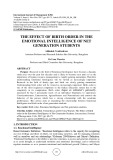
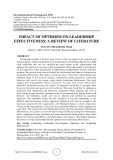
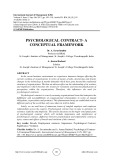
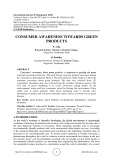
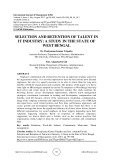

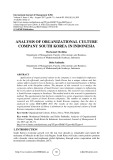
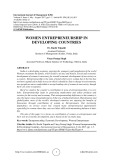


![Câu hỏi ôn tập Tâm lý học quản lý [chuẩn nhất]](https://cdn.tailieu.vn/images/document/thumbnail/2025/20251125/hathunguyen04er@gmail.com/135x160/25191764124376.jpg)
![Cẩm nang chăm sóc và nuôi dạy trẻ tăng động giảm chú ý [chuẩn nhất]](https://cdn.tailieu.vn/images/document/thumbnail/2025/20251118/kimphuong1001/135x160/4241763431998.jpg)
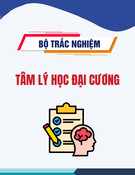
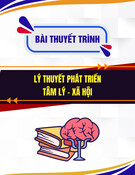
![Sổ tay Hướng dẫn tự chăm sóc trầm cảm [chuẩn nhất]](https://cdn.tailieu.vn/images/document/thumbnail/2025/20251029/kimphuong1001/135x160/3711761720335.jpg)
![Đề cương Tâm lý học xã hội [chuẩn nhất]](https://cdn.tailieu.vn/images/document/thumbnail/2025/20251028/c.dat0606@gmail.com/135x160/99271761707421.jpg)
![Câu hỏi ôn thi Nhập môn khoa học nhận thức [chuẩn nhất]](https://cdn.tailieu.vn/images/document/thumbnail/2025/20251021/aduc03712@gmail.com/135x160/48471761019872.jpg)
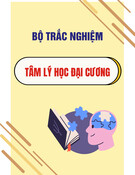
![Đề cương môn Tâm lý học sinh tiểu học [chuẩn nhất]](https://cdn.tailieu.vn/images/document/thumbnail/2025/20251007/kimphuong1001/135x160/51781759830425.jpg)
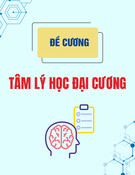
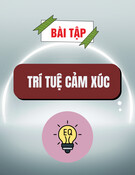

![Tâm lí học lứa tuổi và sư phạm ở tiểu học: Bài thuyết trình [chuẩn nhất]](https://cdn.tailieu.vn/images/document/thumbnail/2025/20250918/vuhoaithuong14@gmail.com/135x160/90941758161117.jpg)
